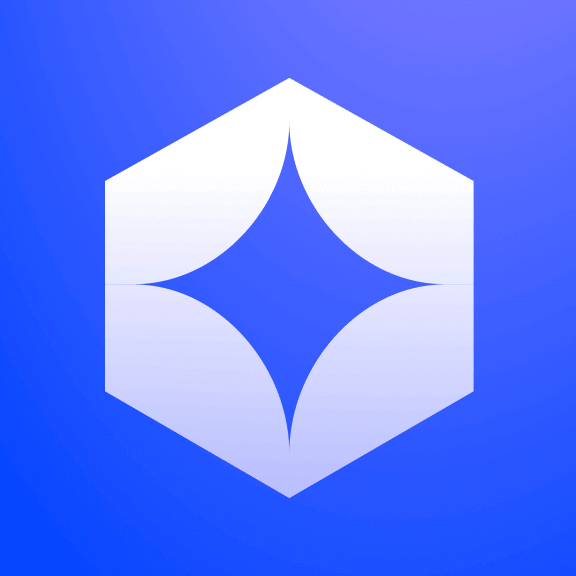Qoder – Alibaba launches AI Agentic programming tool

What is Qoder
Qoder is an AI Agentic launched by Alibaba Programming Toolsdeeply understand the entire code base architecture, memorize and learn your habits, support MCP tool ecological expansion, provide context-aware completion, inline chat and one-click “wiki” code structure, and automatically select the best model. Qoder is not a simple code completion tool, trying to become a real “thinking partner” for developers. The preview stage is free to open all functions, helping developers focus on solving real software problems.
The main functions of Qoder
-
Intelligent code base semantic search: Segment related symbols across files and modules, call chains and dependencies in seconds. Qoder supports natural language and regular dual-mode query and highlights influence surfaces.
-
In-depth architectural insights: Automatically build dependency graphs, domain boundaries, design patterns and potential technical debt reports, locate the root causes of the problem and provide a layered repair plan.
-
Continuous Memory Engine: Dual-level memory at the conversation level and project level, recording developer style, team specifications, and historical decisions. The more you use it, the more you understand you and automatically apply it in subsequent interactions.
-
Dynamic best model routing:Qoder can select the most suitable LLM in real time based on language, task type, and performance budget, and obtain the optimal speed and accuracy without manual switching.
-
Context-aware completion: Comprehensive multimodal information such as ten thousand tokens, directory structure, pictures, logs, documents, etc. to generate row-level completion and next editing prediction.
-
Inline chat & refactoring: Direct dialogue beside the code, supporting explanation, generation of single tests, reconstruction, and performance analysis, without switching windows to maintain flow.
-
One-click “wiki” code library: Automatically generate interactive architecture knowledge graphs, module responsibilities manuals, and API manuals, supporting full-text search and version comparison.
-
MCP Tool Ecology: Through Model Context Protocol, seamlessly connect to databases, APIs, browsers, terminals and other external tools to realize one-stop reading, writing, debugging, and deployment.
-
Multimodal input understanding:Qoder supports screenshots, design drafts, log files, PDFs, sequence diagrams, etc. as contexts to improve the accuracy of understanding of requirements and defect reproduction.
-
Zero configuration team synchronization: Memory, rules, and architecture diagrams are synchronized in real time in the cloud, automatically initializing the environment for new members, so that the team’s code style is consistent with cognition.
How to use Qoder
- Visit the official website: Use a computer browser to access the Qoder official website (https://qoder.com/) and download the corresponding version according to the system.
- Install and use:Qoder currently supports Windows and Mac computer versions (both Intel chips and Apple chips support them). After downloading the installation package, install it, register an account to log in.
-
The browser login page will pop up when the first startup → Log in with your GitHub / GitLab / Google account → check the repository to be authorized → return to the local IDE.
-
Let AI understand the entire project:After starting, click “Open Folder” to select the item → automatically start indexing.
-
Delegate tasks using Quest Mode
-
Click the Qoder icon in the sidebar → select “Quest” → describe the task in natural language in the input box, for example:
Upgrade all usages of Axios to the latest version and open a PR - Click “Submit Quest” → Background Agent asynchronous execution → After completion, the Notification Center can view diff and one-click merge PR.
-
-
Use Memory to solidify team specifications
-
Open the Command Panel (Ctrl+Shift+P) → “Qoder: Open Memory Rules” → Add rules in the open JSON.
-
After saving, all completions and Quests will automatically follow this rule; if you need to share, click “Share” in the upper right corner to generate a link for team members to import it with one click.
-

Qoder’s core advantages and differences
Traditional programming tools only help you “write code”, while Qoder is like a senior colleague who “read all your code, remember all your habits, and can work for you across systems.”
-
Panoramic context: Traditional programming tools only look at dozens of lines near the cursor. Qoder reads the entire warehouse, historical submissions, pictures, documents, and external API documents into the context window at one time in milliseconds, truly achieving “code is knowledge graph”.
-
Memories that will grow: The traditional tool sets the zeroing of each restart. Qoder’s Memory continuously accumulates personal style, team specifications, and business rules, and can be synchronized in seconds when changing projects and computers.
-
Quest asynchronous proxy: Traditional plug-ins can only be completed synchronously. Qoder’s Quest Mode hosts tasks such as “upgrade dependency, batch refactoring, running tests, and improving PR” to the background, and push the results after completion.
-
MCP Unlimited Plug-in: Traditional extensions rely on the slow update of the plug-in market. Qoder can instantly access databases, Jira, Docker, and cloud resources like browser installation extensions, and its capabilities can be used as they are connected.
-
Zero decision model routing: Traditional programming tools need to manually select GPT-3.5/4, and Qoder automatically selects the most suitable model based on language, task complexity, and cost budget. Developers do not need to care about “what AI should be used”.
-
Inline is full function: Traditional reconstructions need to jump to windows and run scripts. Qoder can complete explanations, generate single tests, perform performance analysis, and apply patches in one click, and do not jump out of the IDE throughout the process.
Qoder application scenarios
-
Large-scale code migration: Initiate a Quest with one click, allowing AI to complete cross-repository dependency upgrades in the background (such as Axios v0 → v1, Python 2 → 3, Spring Boot 2 → 3), and at the same time generate a compatibility layer, repair destructive changes and submit a PR.
-
Structure corruption control: Use panoramic dependency diagrams and “wiki” reports to automatically identify circular dependencies, outdated modules, and repeated implementations; Quest is then reconstructed according to hierarchical specifications and continuously remembers the newly-designated architectural principles of the team.
-
Legacy System Reverse & Document Complete: Throw million old projects without documents to Qoder, and generate interactive architecture knowledge graph + API manual in 5 minutes; any newcomer asks “How to run this business” in the future, you can get link-level answers directly in the inline chat.
-
Test left shift & coverage complete: Select a module → Inline Chat “Generate unit tests for all public methods and achieve 80% line coverage” → Quest Automatically write tests, run CI, and mark failed use cases as Issue to be repaired.
-
Co-development of multilingual microservices: In mono-repo including Go, TypeScript, and Python, Qoder automatically cuts the best model and calls their respective linter/formatter/Docker builds with MCP to ensure consistency across service interfaces and version synchronization.
-
Requirements ↔ Two-way Traceability of Code: The product manager puts the screenshot of Figma prototype + Jira requirements into the Quest, and Qoder automatically generates corresponding front-end components through visual understanding + requirement text, completes the route, fills in fake data, and binds API drafts.
-
Safety and compliance automation audit: Connect to OWASP MCP Server, Quest will automatically run SAST and license scans after each commit. If CVE is found, it will immediately raise PR and update SBOM; Memory will solidify the company’s compliance rules to prevent recurrence.
Source link



